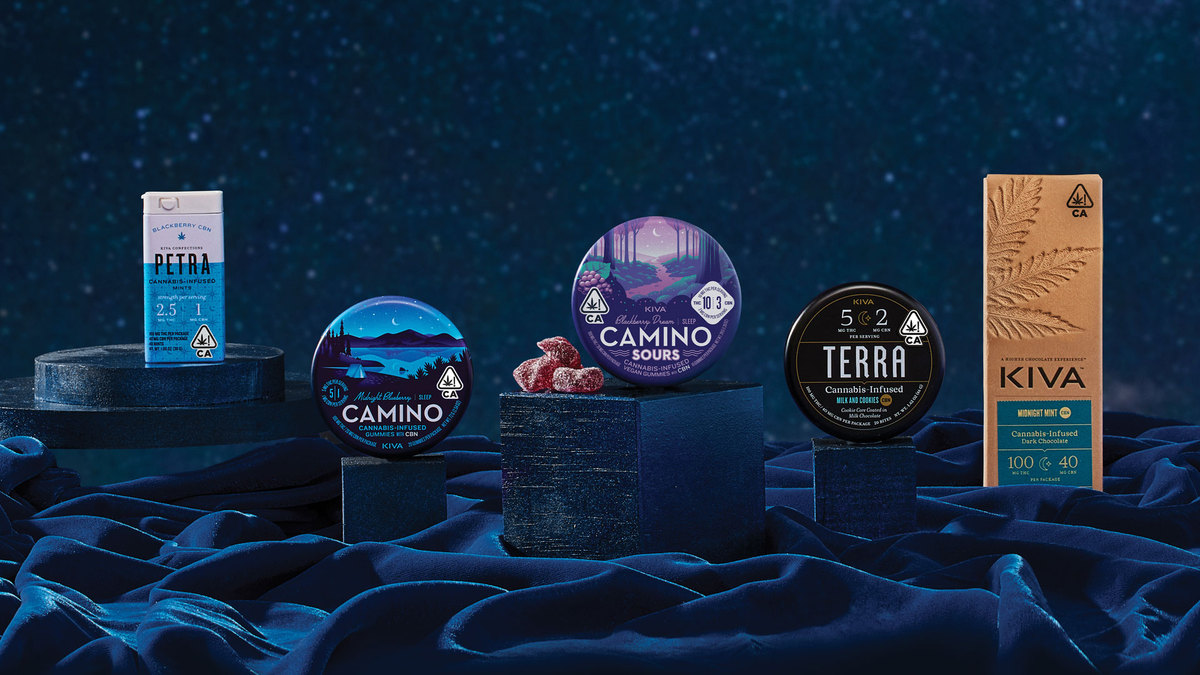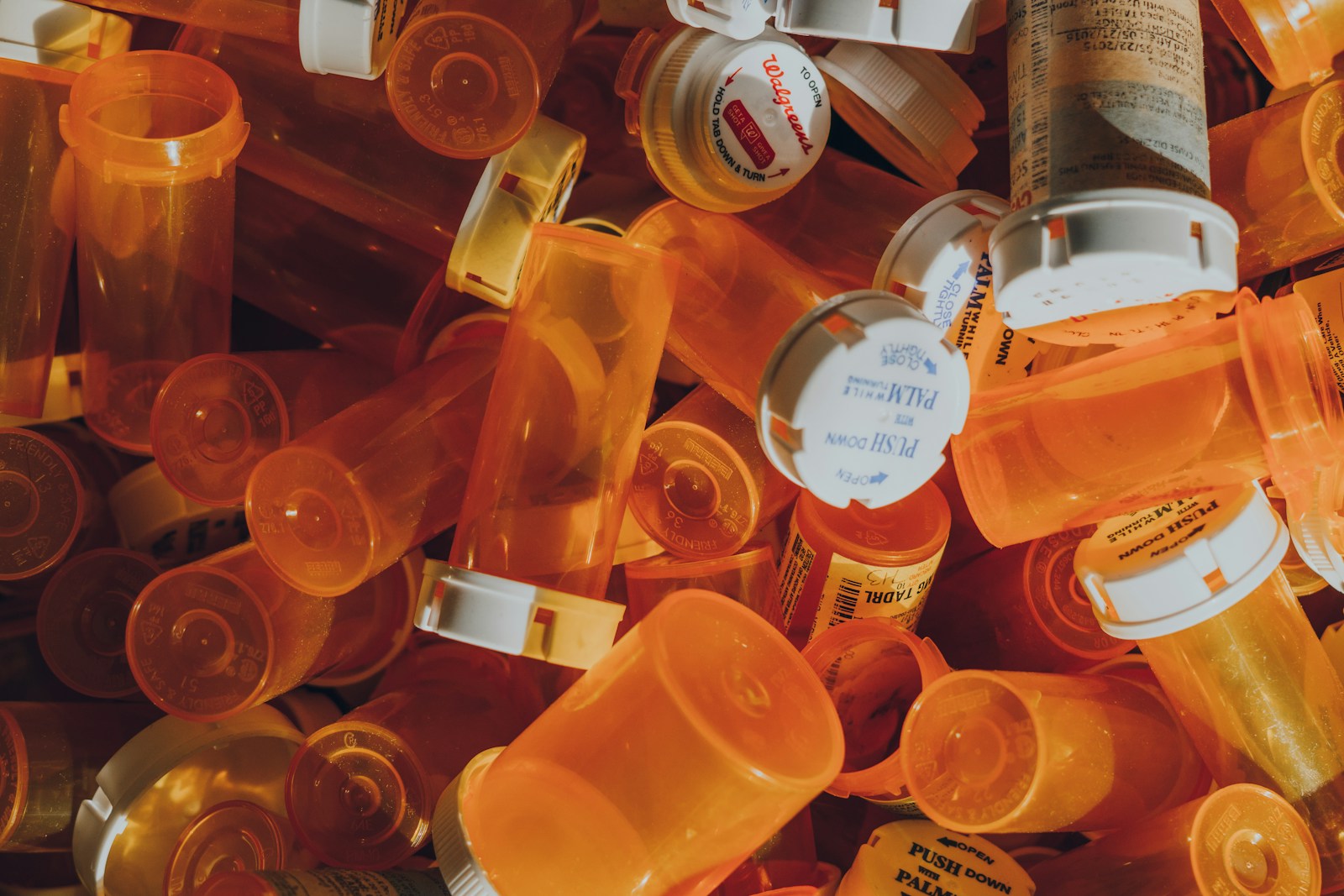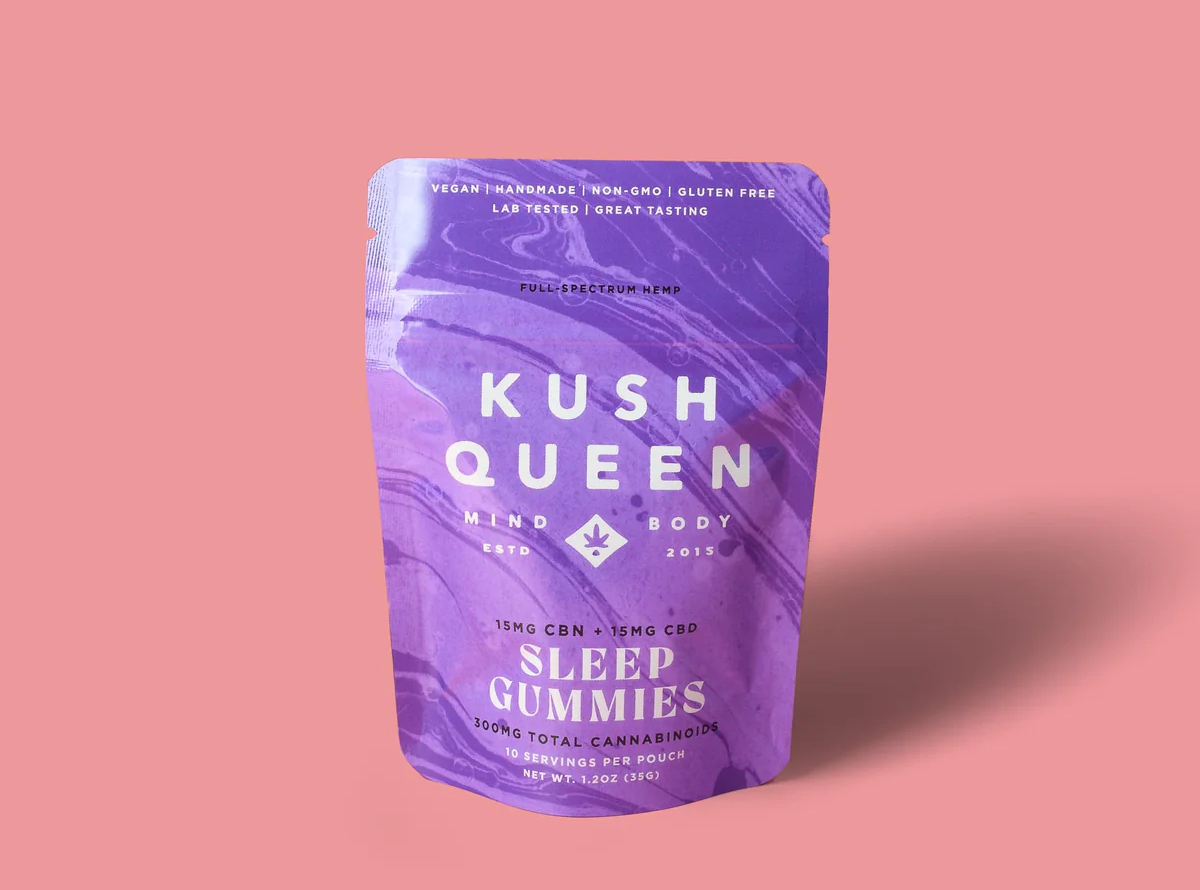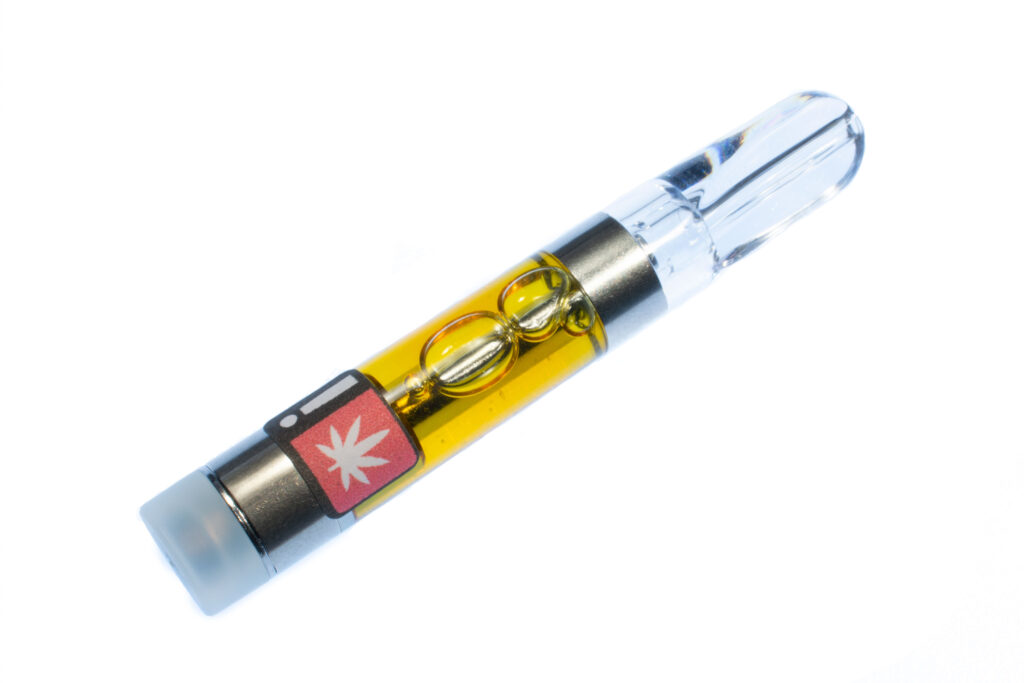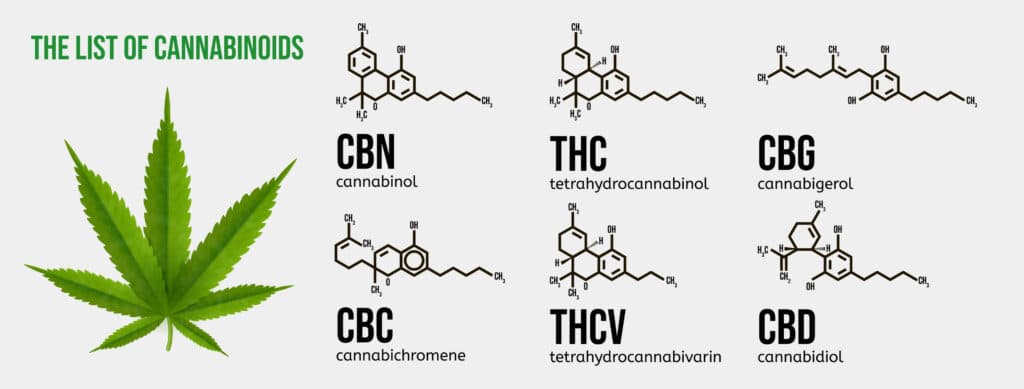Camino Midnight Blueberry gummies are #1 sellers in a dreamy lineup of CBN-infused sleep products from Kiva.
Trouble sleeping is a common thread that tangles many. Lying awake, waiting for sleep that doesn’t come, waking up often, or rising for the day feeling unrested are all problems that plague a massive amount of people.
If you struggle with sleepless nights, it’s likely you’ve tried a whole host of potential remedies to quit counting sheep. From over-the-counter medications and supplements to exercise and white noise—if you’ve tried them all and still feel stuck, you’re not alone.
Cannabis strains for sleeping is one of the most popular effect categories on Leafly, with people looking for a natural remedy for sleeplessness turning to the power of the plant for solutions.
For many, cannabis edibles have become the secret to their better sleep success. Weed is a natural sedative and proven effective sleep aid for many people struggling with sleep-related issues. Cannabis-infused edibles carry the added benefit of staying in your system longer, providing an extra lift toward long-lasting sleep.
Now, top brands like Kiva are featuring CBN in sleep-targeting edible formulas to get a perfectly dialed dose of dreaminess. The rested reactions have been pouring in since 2019 when Kiva released the very first CBN sleep edible with their Camino Midnight Blueberry gummies: they’re not only Kiva’s best-selling gummy, but also the popular brand’s best-selling product by far.
“Aside from the fact that Kiva gummies are so delicious, [the Midnight Blueberry gummies] help me sleep like a baby. Wake up feeling refreshed too.”
Review on Leafly
Cannabis & CBN for sleeping
Luckily for those struggling with sleeplessness, studies show that cannabis can be an effective sleep aid. Many of the underlying problems influencing sleep issues like pain, racing thoughts, and insomnia, can be relieved by cannabis.
Sleep studies, primarily examining high-THC cannabis, have found that cannabis can help you fall asleep faster, and CBD has gotten attention for its sleep-aiding potential, especially in regard to its anxiety-relieving properties for people for whom anxiety plays a role in poor sleep.
Now CBN, another cannabinoid found naturally in the cannabis plant, is in the spotlight for its potential in aiding better sleep. The entourage effect in cannabis describes the phenomenon in which unique cannabinoids and terpenes in the plant work together to create distinct effects. Early indications suggest that CBN may work synergistically with THC and sedating terpenes to produce the sleep-inducing effects that people are searching for.
Kiva, no stranger to the front of the pack, was the first brand to release a CBN-infused edible back in 2019. Combining 5 mg THC with 1mg CBN and chamomile and lavender extract to provide a tailored, synergistic balance of cannabinoids and sleepy terpenes, Midnight Blueberry Camino gummies quickly became Kiva’s star product. Rested fans have been raving ever since, and Kiva has expanded its line of CBN-infused edibles to offer a range of ratios and flavors so that even more people can find relief.
The Kiva CBN Dream Team
Your sleep issues are unique to you, so it’s essential to have solutions that are tailored to your unique needs. Kiva developed the Dream Team to do just that, a lineup of CBN sleep edibles offering a spectrum of THC and CBN dosages, thoughtfully dreamy and delicious flavors, and formats from gummies to sours to chocolates to suit every taste.
Camino Sours Blackberry Dream
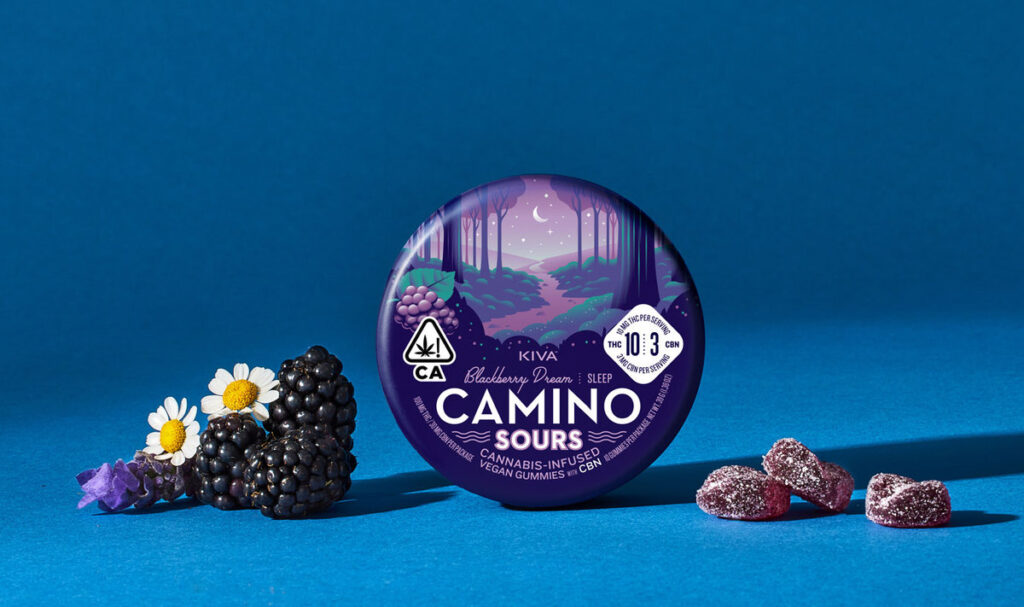
The latest in Kiva’s sleep lineup is also their strongest CBN-infused edible, with 10 mg THC and 3 mg CBN per gummy. These vegan gummies combine significant quantities of sedating cannabinoids and terpenes with dreamy blackberry flavors plus chamomile and lavender extract to offer a soothing experience to whisk you off to dreamland.
In thinking about dosages, it’s wise to consider your typical THC tolerance—cannabis will affect everyone differently so it’s important to experiment to find what works best for you—if you usually enjoy 10 mg THC edibles, the Camino Sours Blackberry Dream gummies are a great place to start.
Camino Midnight Blueberry sleep gummies

The sleepy spark that started it all, Camino Midnight Blueberry gummies contain 5 mg THC and 1 mg CBN. This sweet-spot dosage offers half the THC found in what’s generally considered a standard 10 mg THC potency for cannabis edibles. For people with lighter tolerance or who want a more balanced ratio of CBN to THC, this harmonious combo could be just the ticket to tranquil nights.
“These gummies are awesome. Take them an hour or two before bed. It’s a really nice body high that doesn’t get you stuck to the couch but does motivate you to get to bed.”
Review on Leafly
Midnight Mint Kiva Bar
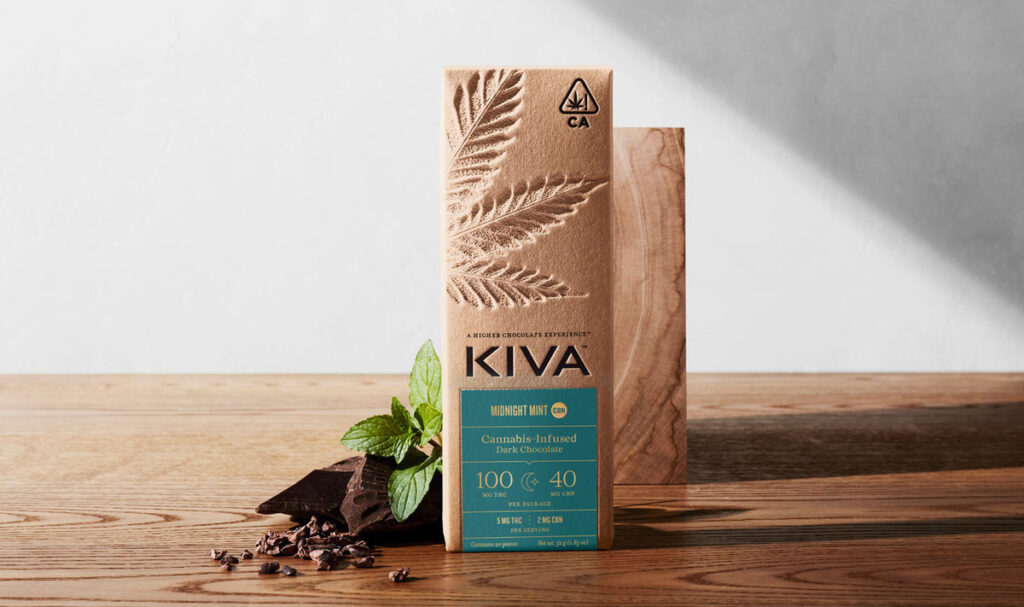
For chocolate lovers or those seeking an extra boost of CBN, look no further than Kiva’s Midnight Mint Dark Chocolate Bar. With a soothing mix of 5 mg THC and 2 mg CBN per piece, these delectable bars have fans feeling rested and refreshed. Rich dark chocolate and crisp mint flavor with a sprinkling of cacao nibs make for a dessert you’ll look forward to almost as much as the sound sleep that comes after.
Terra Milk & Cookies Bites
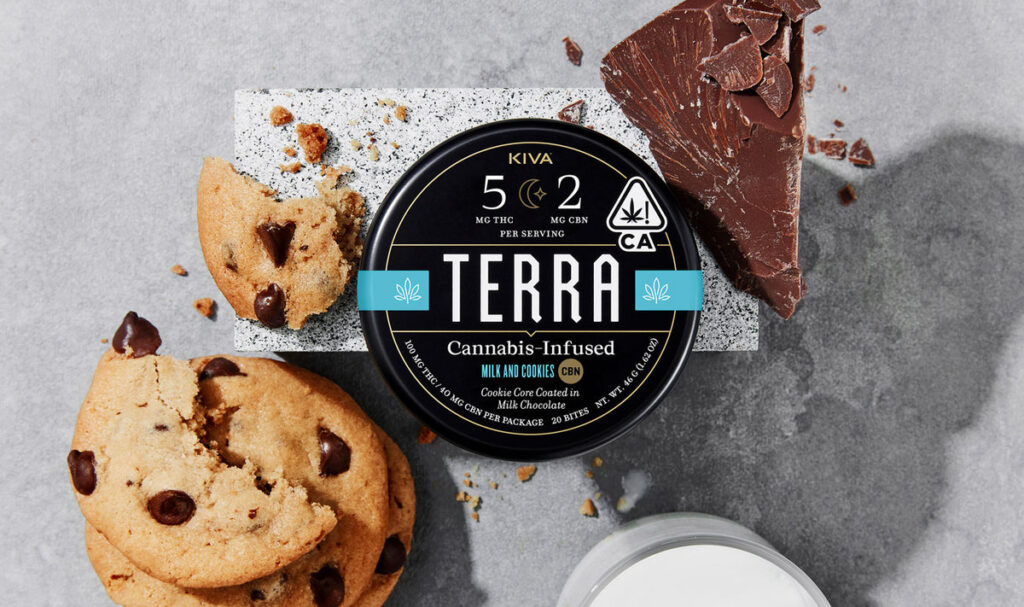
If milk chocolate is more your style, you’re in for a treat. Kiva offers the same ratio of 5 mg THC and 2 mg CBN in their popular Terra chocolate bites. A crunchy chocolate cookie core is bathed in the creamiest of milk chocolate, with hints of vanilla and sea salt adding the finishing touches to these delectable bedtime wonders.
Petra Blackberry Mints
For a subtle blend of THC and CBN in a fresh format, Kiva provides their Petra Blackberry Mints. 2 mg THC and 1 mg CBN combine with blackberry and vanilla flavors for a refreshingly tranquil, sugar-free experience that’s perfect for power naps and those who love a lightly-dosed edible.
Find your best sleep with Kiva
With so many options to help support better sleep, Kiva makes it easier than ever to drift off with something delicious. Find the all-natural treat for all your slumbering needs at the link below.



